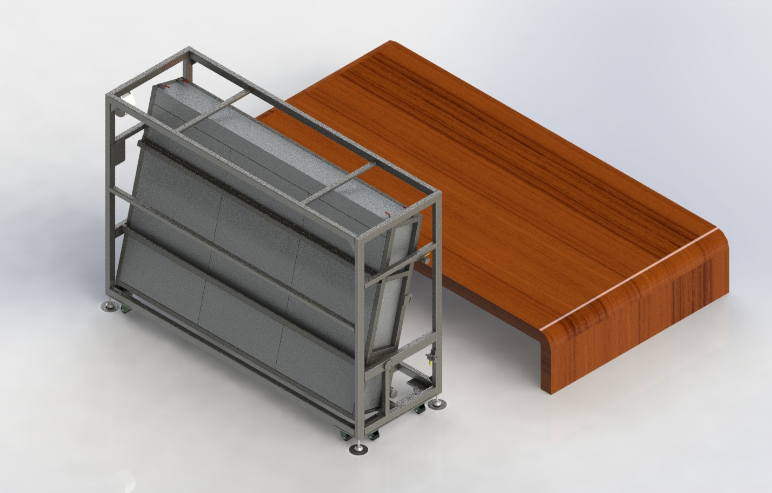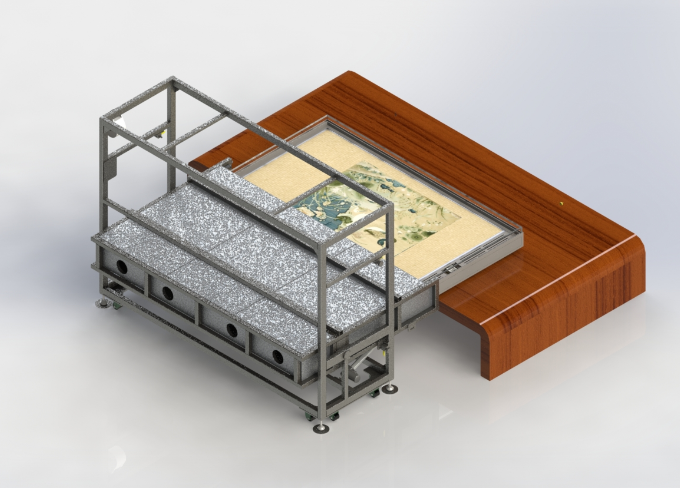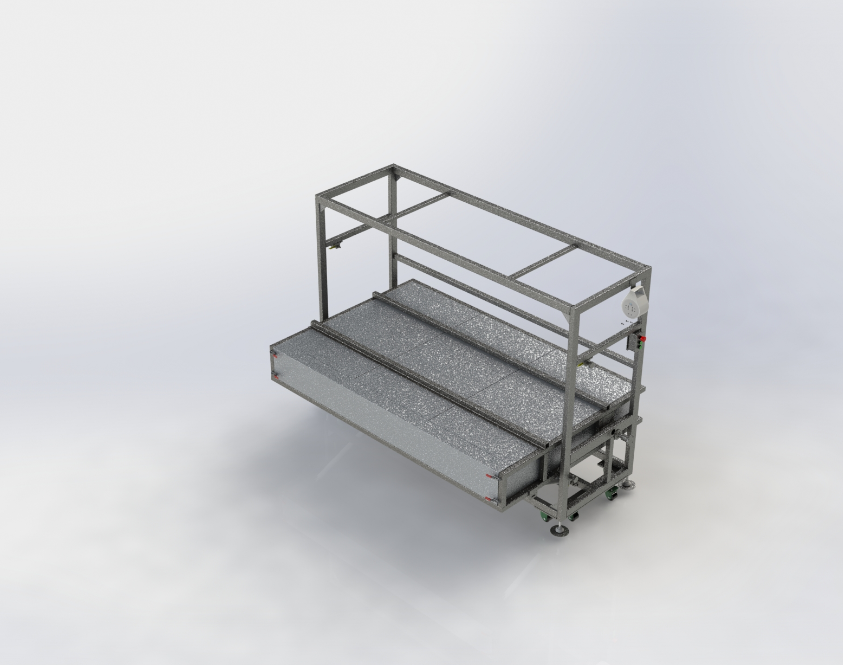Museum Display Case Design Is An Important Step In The Design Of Exhibitions
The year of 2022 is the 70th anniversary of Shanghai Museum. From December 17, 2022 to January 1, 2023, Shanghai Museum held the “Rui Se Ning Guang” Auspicious Color and Condensing Light – special exhibition of the secret K’ossu treasure of Ducklings in the Lotus Pond. In order to display the largest individual K’ossu cultural heritage handed down by Zhu Kerou in the Southern Song Dynasty, which was once featured on the column of “National Treasure” on CCTV. Relicase, Display & Design Department of Shanghai Museum and the Cultural Relics Protection Center jointly designed and formulated the display solution for this display showcase which as finally and successfully developed and used in the exhibition. This is also an attempt of cross-departmental cooperation in the design and fabrication of special relics showcase, and puts forward a new research topic on the design and production of display cases.
In the design concept of temporary exhibitions, museum display case design is an important step in the whole design of cultural relics exhibitions. The attributes of cultural relics determine the design and production of display cases and the safety and protection of cultural relics shall be always put in the first place. Secondly, the cultural relics showcase itself should also have certain aesthetic attributes. The design of display cases for cultural relics is different from that of display cabinets for general commodities. The display cases shall be designed and developed according to the physical characteristics of the cultural relics such as size, material, and shape that varies from one another. In the view of characteristics of cultural relic, we may analyze and elaborate the design ideas of this display case.
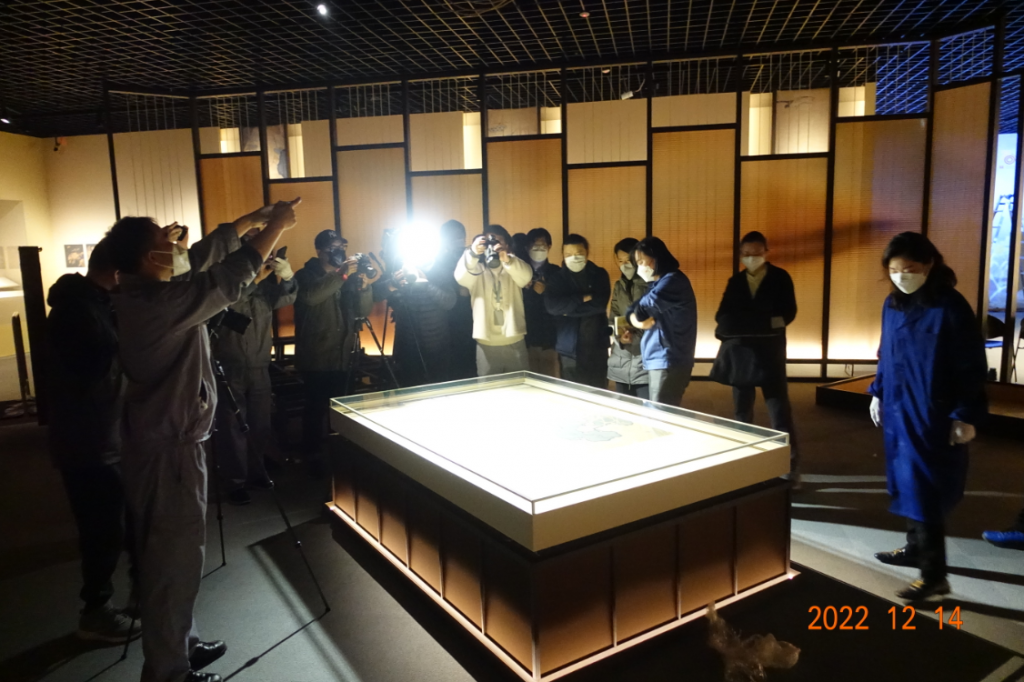
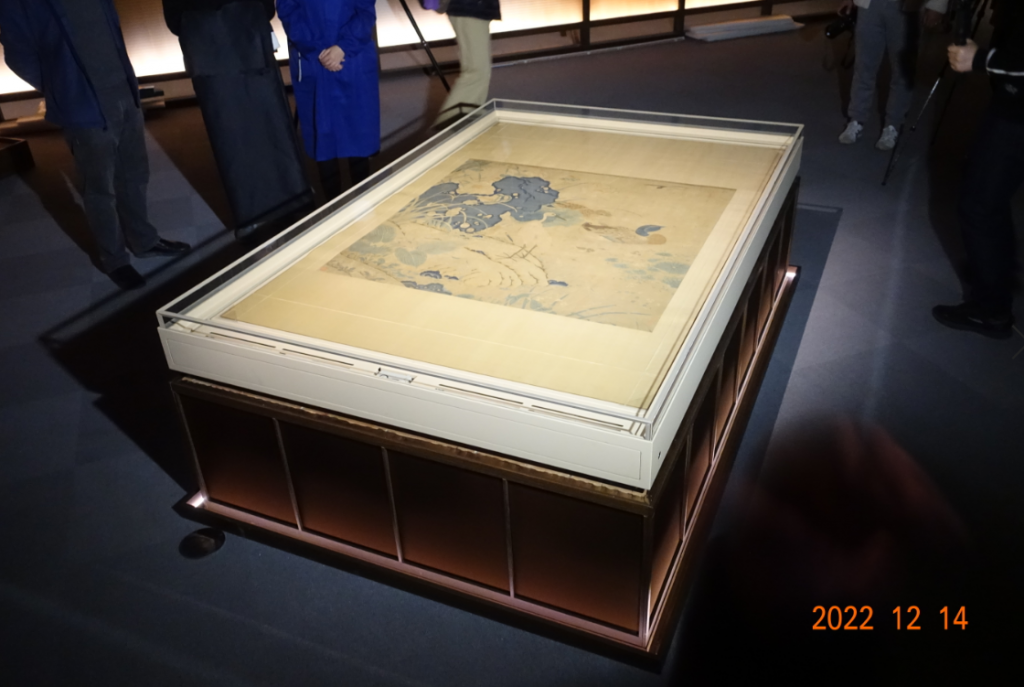
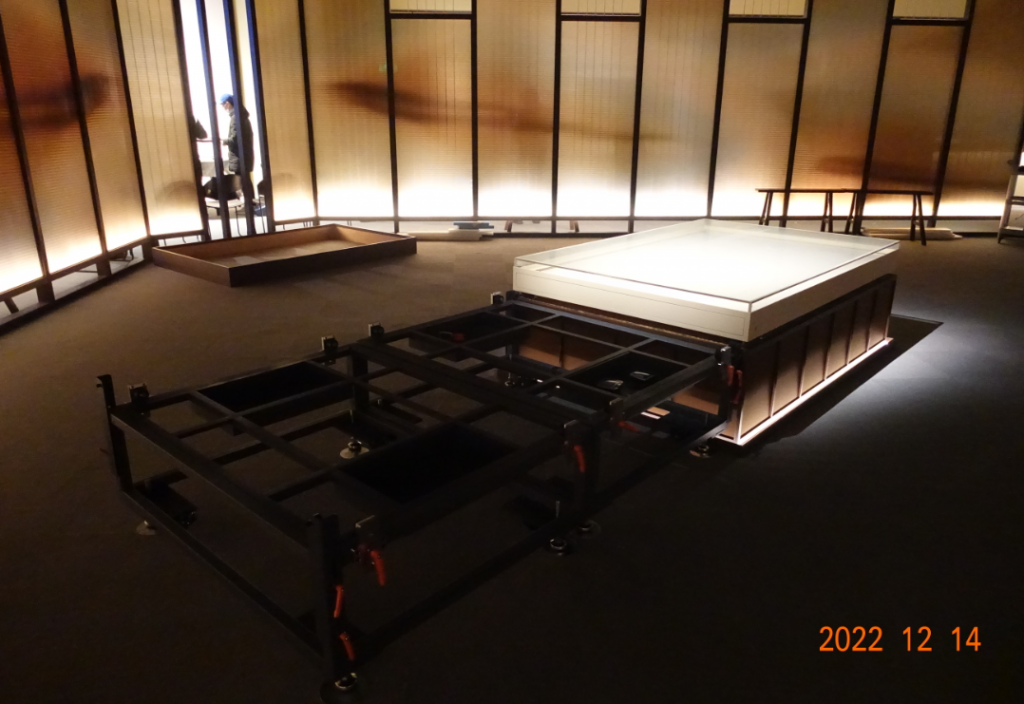
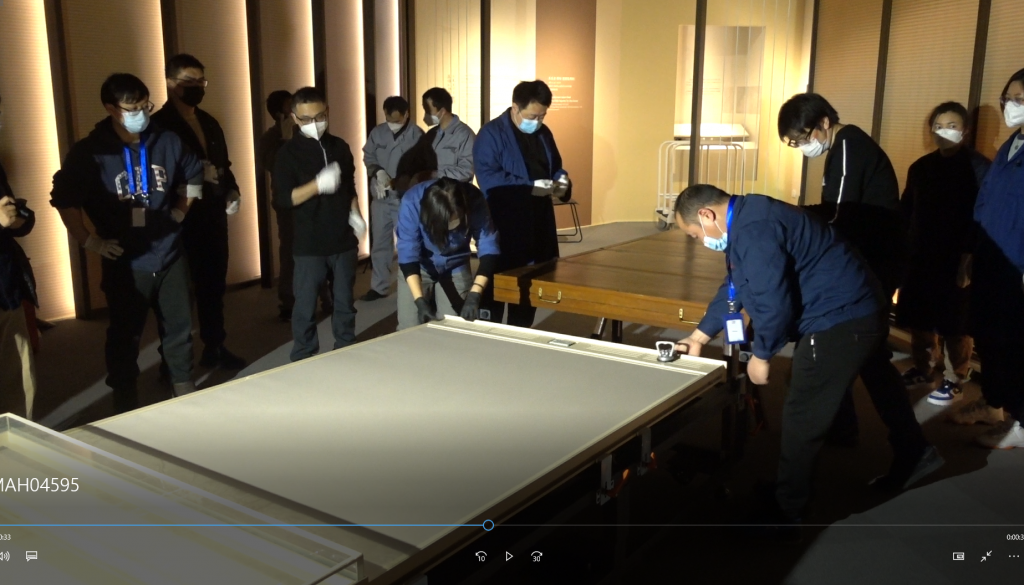
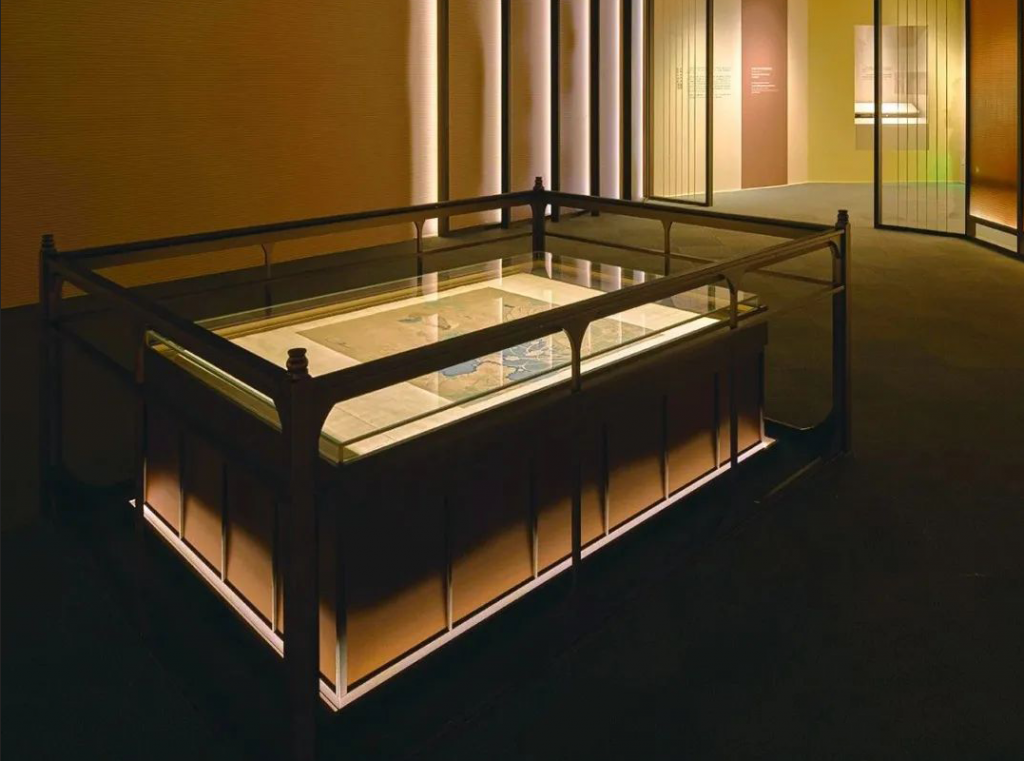
“The Artwork of Ducklings in the Lotus Pond” is a rare K’ossu masterpiece by Zhu Kerou, a famous K’ossu master in the Southern Song Dynasty. He integrated the skills of painting skills in Song Dynasty into the K’ossu craftsmanship, and formed the unique K’ossu art school which is known as “K’ossu Zhu” in the world.
The core of “Ducklings in the Lotus Pond” is 108.4 centimeters in length and 109 centimeters in width. After being collected in the Shanghai Museum, the working staff mounted it into a single-piece style frame, and the final size shall be 191 cm in length and 127.2 cm in width. This artwork is toned through thin color-mixed yarn, and the charm of ink is embodied through K’ossu technique and forms a natural fading effect. The raw material of ancient K’ossu is silk, which is a kind of organic protein, and it is easy to cause some damage by insects if it is not preserved properly. Moreover, the surface of “Ducklings in the Lotus Pond” is extremely fragile, and it will be easily damaged even if the temperature and humidity change slightly. For such a high-risk cultural relic, Relicase and Shanghai Museum jointly teamed up to find the display solutions.
First of all, since the surface of cultural relics is found partially damaged, it is not suitable for the vertical display. Secondly, the K’ossu cultural relic is about two meters long and more than one meter wide, head-up viewing shall be the safest means of display. After deliberate research and discussion, the design team finally determined the following points as the main production requirements: cultural relics should be displayed close to the glass surface; passive humidity control agents should be placed in the showcase; sealing performance should be excellent; 5 cm thick glass should be left on the four sides; there should be a well-matched transportation vehicle; the top glass should be a complete piece with no reinforcing components in the middle.
The display case should be close to the cultural relics as possible, which may also cause new structural and technical problems, mainly including the following points: How thick should the lining board be? How to reduce the vibration when the drawer is pulled out? Since the overall thickness doesn’t exceed more than ten centimeters, how to hide the movable and fixed devices? How can the surrounding glass at 5cm in thickness be aesthetically connected with the top glass and still be safe? How to ensure that the cultural relics can be easily drawn out when the slightly raised bars around the liner are on the same level as the cultural relics? How to keep the cultural relics stable while transferring it from a transport cart to a lower display platform? How to keep the glass safe and balanced while an inclination angle occurs during the transportation? How to keep such a big piece of glass resilient and unbending? How to install the locks at such a low height inside the cabinet? While transferring the case from the cart to the platform how to keep avoid the height difference between them? How to keep the floor undamaged while loading the cart onto the floor of the exhibition hall?
With these questions in mind, Relicase overcame all the technical difficulties, revised the drawings, simplified the components to the most suitable size, and finally developed and fabricated the integrated display case system including the display case carriage, placement cart and the transfer cart.
Display case carriage is the main body for the display of artwork which consists of anti reflection laminated glass hood, high tensile bottom plate, aluminum frame, silent rollers, sealing strips, passive control agent, drawer frame, temperature and humidity display, roller and adjustable supporting feet, and baseboard, etc. Anti reflection laminated glass and alloy frame are bonded together with neutral high-strength structural glue to form a solid glass and alloy frame. The artwork shall be placed horizontally on the baseboard and assembled on the drawer frame. While unlocking the drawer on both sides, the drawer frame with artwork shall be moved out with the rollers evenly and stably. The sealing baseboard and the sealing strips form a good sealing system to guarantee the display case shall be well airtight.
Placement cart is composed of frame, baffle with lift limit, lifting rollers, lockable silent rollers, and adjustable supporting feet, etc. Adjust the height of placement cart to the same height with display table. While the display case is pushed out of the drawer frame, the operator shall gradually elevate the lifting rollers step by step, and hold the bottom of drawer frame till the display case carriage is pushed out completely.
Transfer cart consists of frame, rolling-over frame, lockable silent rollers, linear actuator, lower locking seat, control button, upper locking seat, and spare extension board, etc. During the application, first of all, adjust the supporting feet of transfer cart to keep the lower surface of rolling-over frame at the same height with the platform, and lock up the rollers and anchors. Remove the front baffle, and move the display case slowly to the rolling-over frame, and lock up the front baffle. Press the control button to lift the rolling-over frame upward till the linear actuator stops. Set up the upper and lower locking seats when the rolling-over movement is done. Put away the supporting feet of the transfer cart and unlock the casters.
The specific operation procedure of the display case system shall be as follows: First of all, keep the transfer cart close to the long side of display case carriage, and press the control button to make the linear actuator roller over. Remove the front baffle of rolling-over frame, and tone the bottom of transfer cart to keep it at the same height with the platform. Then the display case carriage shall be pushed out slowly through the rollers to the platform. When it is completely placed on the platform, adjust the supporting feet to fix them on the platform. Then open the drawer from the short side of the display case carriage, and try to move it out to the placement cart with the lifting rollers till the whole display case frame is completely placed on the placement cart. Remove the lining board and put in the passive humidity control agent. Put the lining board back and then carefully put on the artwork. To avoid any edge wrapping due to the changes of temperature and humidity, the artwork shall be fastened with 4 transparent triangle presser feet. While all is done, the operator shall slowly move the drawer into the display case. The whole process is done. After that, the wooden veneer shall be added to the outside of the display case, and meanwhile, an exquisite wooden fence shall be enclosed as well.
This whole integrated display case system is the final display solution designed and developed by Relicase and the Exhibitor together. Such a specific customized display solution for this national treasure also offers Relicase a great chance to challenge itself and accumulate plenty of valuable working experiences.
In the design concept of temporary exhibitions, display case design is an important step in the whole design of cultural relics exhibitions.
Latest news
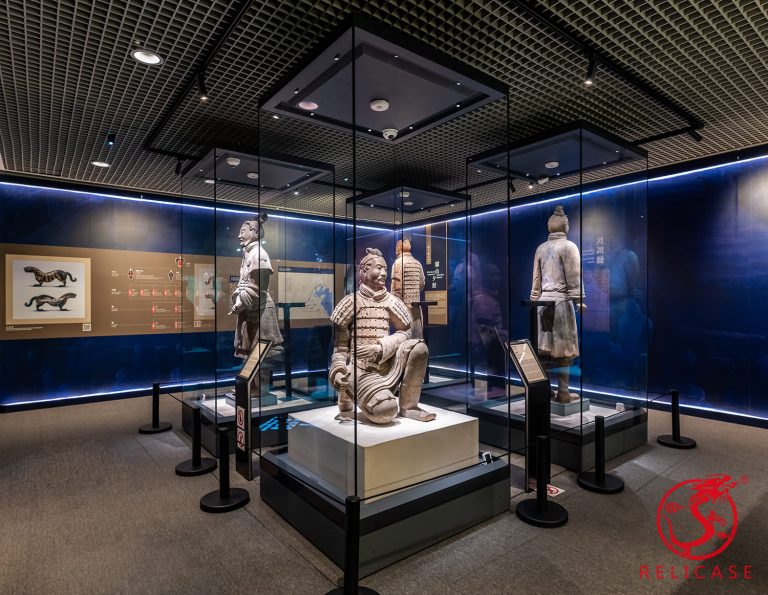
Relicase at Macau Museum: Safeguarding Heritage, Celebrating Legacy
Macau Museum: “Edification of the Masses — Cultural Treasures from the Zhou, Qin, Han, and Tang Dynasties” A Landmark Embraces Innovation The Macau Museum stands proudly atop the historic Mount Fortress, next to the famous Ruins of St. Paul’s. As an iconic symbol of Macau’s history and multicultural heritage, it now embraces the touch of…
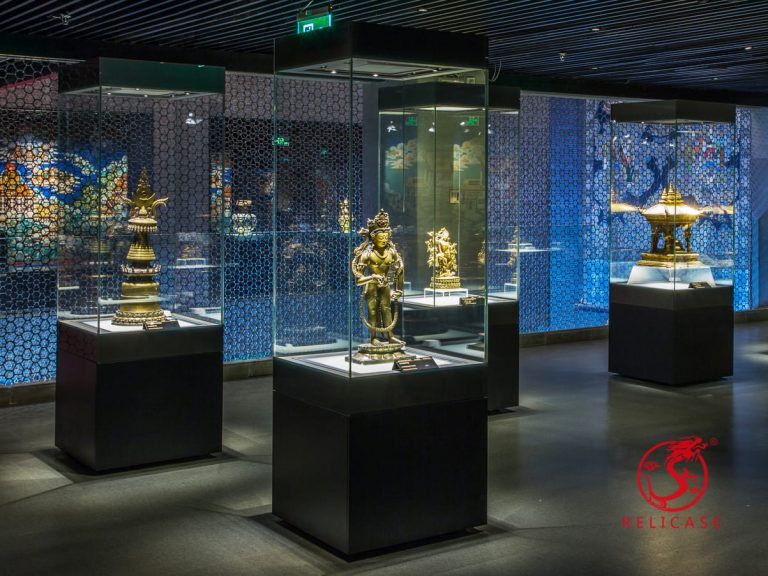
Potala Palace
Abstract On April 26, 2017, Relicase completed the showcase project for the Treasure Hall of the Potala Palace in Tibet. The Collections Hall spans three floors and is divided into two major sections, showcasing a total of 273 individual artifacts and replicas, as well as 155 sets of artifacts (or 159 sets, including 147 sets…
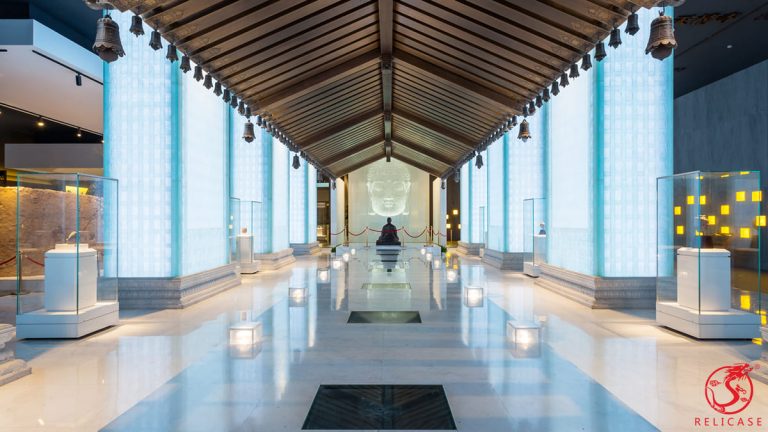
Porcelain Tower of Nanjing
Abstract The Porcelain Tower of Nanjing, named and constructed by Emperor Yongle of the Ming Dynasty to honor his parents’ boundless love and virtue, stands as a symbol of filial piety. Celebrated in Du Mu’s poetic lines, “Four hundred and eighty temples of the Southern Dynasties, how many pavilions linger in the mist and rain,”…

